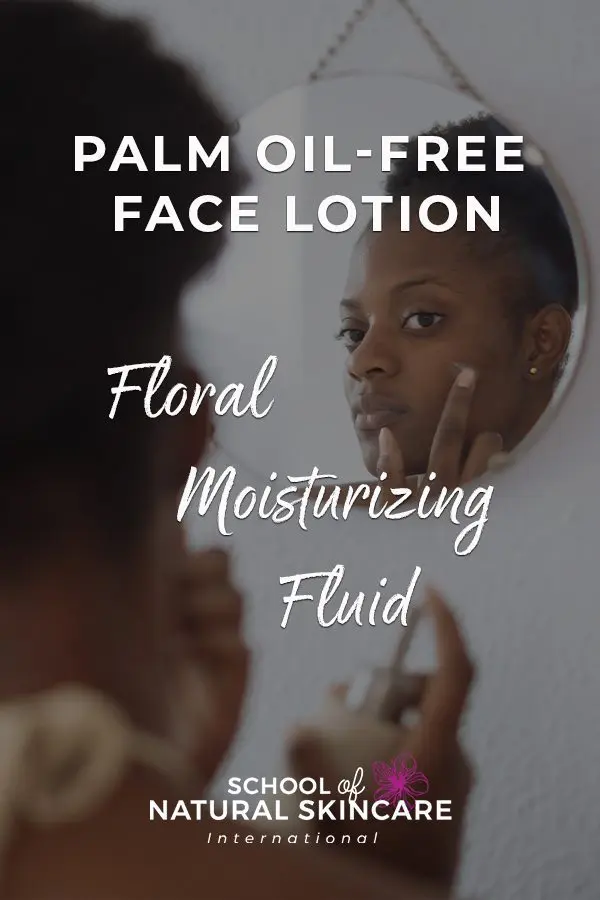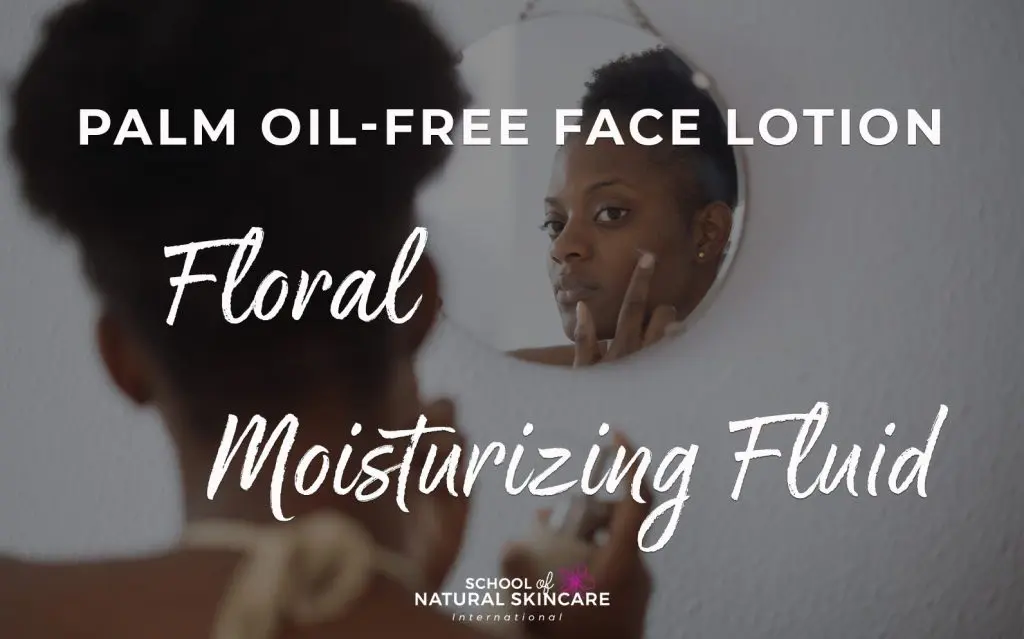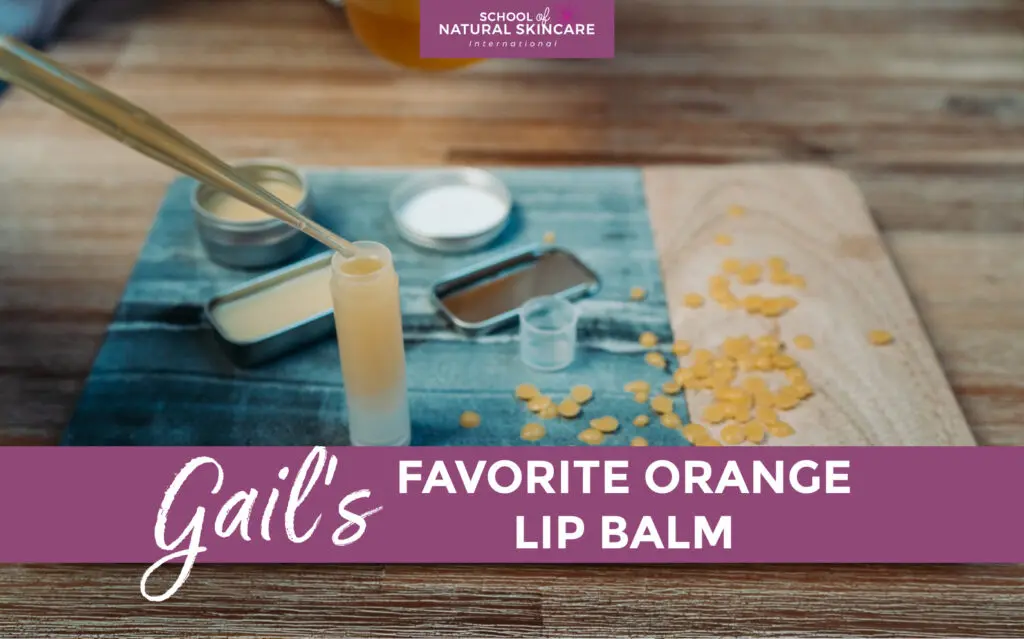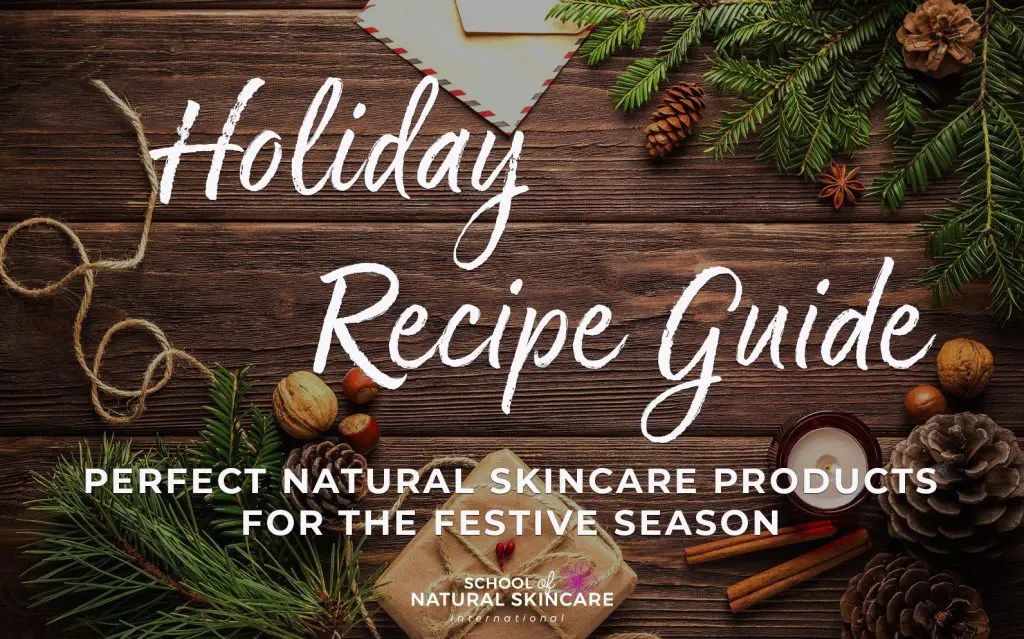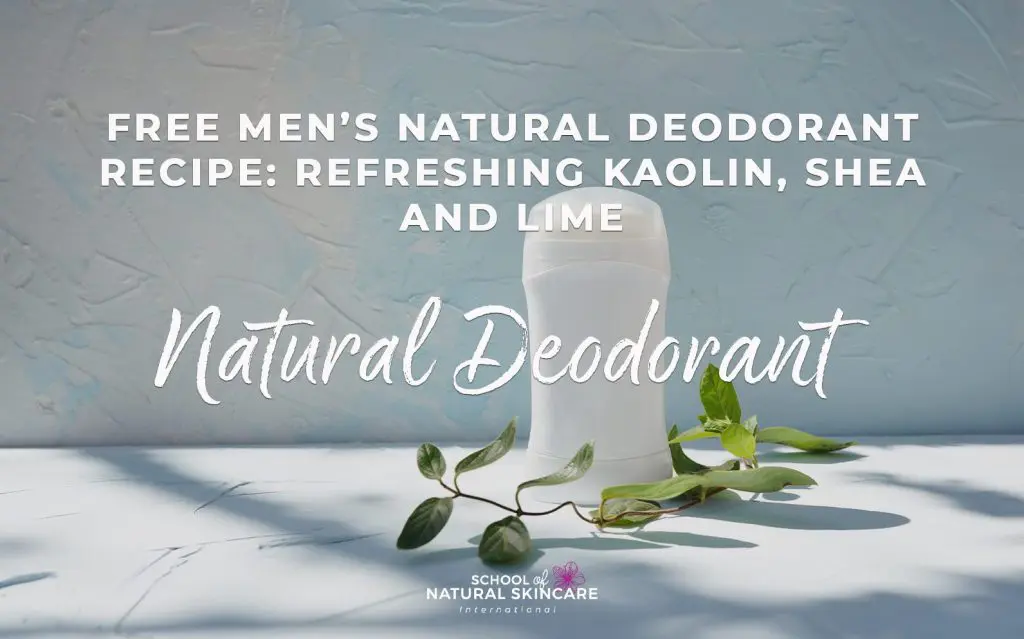Many of our students are interested in using palm oil-free emulsifiers. Palm oil is so prevalent in the cosmetics industry that palm oil-free options are still fairly limited.
Our team of formulators have been trialling six palm oil-free emulsifiers with great success and you can learn about them and how to formulate with them in our Diploma in Natural Skincare Formulation.
Palm oil-free emulsifier: Imwitor 375 (INCI: Glyceryl Citrate, Lactate, Linoleate, Oleate)
Imwitor 375 is one of the emulsifiers we love, for several reasons:
- It’s palm oil-free.
- It’s approved for us in natural cosmetics by COSMOS/Ecocert.
- It can be used in both hot or cold process emulsions.
- It is ideal for creating fluid, low viscosity emulsions (which not all emulsifiers are suitable for).
- It is a cost effective emulsifier as only a small amount is required.
You can find out more about Imwitor 375 in our article Natural Palm Oil-free Emulsifier for Natural Cosmetics: Imwitor 375.
Palm oil-free Floral Moisturizing Fluid Formula
This formula creates a light, low viscosity facial moisturizing fluid. It is a very hydrating and non-greasy formula, with a delicate floral aroma. All the ingredients are permitted in COSMOS-approved natural cosmetics.

Formula ingredients
Emollients
We wanted to create a light feeling moisturizing fluid so we chose light feeling carrier oils: evening primrose oil, borage oil and raspberry seed oil. These oils are quick to absorb, have a light skin feel and leave the skin soft and nourished but not oily.
Borage oil and evening primrose oil are sources of gamma-linolenic acid (an omega 6 fatty acid), which helps speed up cell regeneration, promote healthy growth, improve the skin’s barrier repair function and alleviate inflammation. Raspberry seed oil and evening primrose oil contain decent amounts of linoleic acid which assists in skin barrier function and repair, which reduces TEWL, leading to hydrated, soft and moisturized skin.
Humectants
We used two different humectants (glycerin and hyaluronic acid) to make this a very hydrating moisturizing fluid. For the formula to be palm oil-free you’ll need to ensure that the glycerin you use is palm oil-free (check with your supplier).
Emulsifier
Imwitor 375 (INCI: Glyceryl Citrate, Lactate, Linoleate, Oleate) is our chosen emulsifier as it is very good at creating low viscosity, fluid emulsions and its palm oil-free! We haven’t used fatty alcohols as they would thicken this formula too much.
Preservative system
We have used Geogard 221 (INCI: Dehydroacetic Acid (and) Benzyl Alcohol) as our primary preservative blend. We have added potassium sorbate as our secondary preservative/preservative booster. And we have also used Dermofeel PA-3 (INCI: Sodium Phytate (and) Aqua (and) Alcohol) as our chelating agent.
We submitted this product for preservative efficacy testing (also known as PET or challenge testing). This means the sample is inoculated with gram positive bacteria, gram negative bacteria, yeast and mold to see how effective the preservative system is. This product passed this rigorous laboratory test, meaning the product is protected against microbial proliferation that may present a potential risk to the user. Discover more about creating broad-spectrum preservative blends here.
Dermofeel PA-3 is the trade name for a commercial chelating agent that contains sodium phytate as its key ingredient. Sodium phytate can be purchased from Lotioncrafter (USA), New Directions (Australia), Formulator Sample Shop (USA) and Skin Chakra (Germany). If you can’t obtain it you could omit it from the formula (this may affect the preservative efficacy). You’ll learn more about chelating agents on our Diploma in Natural Skincare Formulation.
Essential oils
This product is fragranced with natural essential oils – geranium essential oil and lavender essential oil – giving this product a beautiful floral aroma. Both essential oils are antiseptic and promote skin healing.
Antioxidant
Vitamin E (INCI: Tocopherol) is our chosen antioxidant.
Formula
|
Phase |
Trade name |
INCI name |
w/w% |
Function |
|
A |
Purified water |
Aqua |
76.6 |
Diluent/solvent |
|
A |
Glycerin (palm oil-free) |
Glycerin |
2.0 |
Humectant |
|
A |
Hyaluronic acid |
Sodium Hyaluronate |
0.4 |
Humectant |
|
A |
Dermofeel PA-3 |
Sodium Phytate (and) Aqua (and) Alcohol |
0.1 |
Chelating agent |
|
B |
Evening primrose oil |
Oenothera Biennis Oil |
6.0 |
Emollient |
|
B |
Borage oil |
Borago Officinalis Seed Oil |
6.0 |
Emollient |
|
B |
Imwitor 375 |
Glyceryl Citrate, Lactate, Linoleate, Oleate |
5.0 |
Emulsifier |
|
B |
Raspberry seed oil |
Rubus Idaeus Seed Oil |
2.0 |
Emollient |
|
C |
Geogard 221 |
Dehydroacetic Acid, Benzyl Alcohol |
1.0 |
Preservative |
|
C |
Geranium essential oil |
Pelargonium Graveolens Oil |
0.3 |
Fragrance |
|
C |
Lavender essential oil |
Lavandula Angustifolia Flower Oil |
0.3 |
Fragrance |
|
C |
Potassium sorbate |
Potassium Sorbate |
0.2 |
Preservative booster |
|
C |
Vitamin E (95% mixed tocopherols) |
Tocopherol |
0.1 |
Antioxidant |
Formula instructions
- Weigh out the water.
- Set aside 1-2ml of the water for dissolving potassium sorbate in phase C.
- Add Dermofeel PA-3 to the remaining water.
- Premix glycerin with hyaluronic acid. Add to the rest of the phase A ingredients.
- Mix phase A together well. Set aside for several hours until the hyaluronic acid has hydrated.
- Weigh all of the phase B ingredients into a beaker.
- Heat both phases to 70-80°C until all the ingredients have melted.
- Add phase B to phase A and emulsify with a stick blender.
- Premix potassium sorbate with the retained 1-2ml water until dissolved.
- Once the mixture has cooled to below 40°C add the ingredients in phase C, one at a time, mixing in between each addition.
- Check and adjust the pH. For us, this product is pH 5.45 before adjustment and we adjusted it to pH 5.0 using 0.5% of a 10% citric acid solution.
To find out more about creating emulsions, the different ingredients and techniques you can use, how to adjust the viscosity, how to adjust the pH, how to formulate for different skin types and much more, join our Diploma in Natural Skincare Formulation.
Free Guide
The Beginner's Guide to Formulating Natural Skincare Products (From scratch, like a professional!)
Start creating your own natural skincare products from scratch – rather than simply following recipes!
Learn how to formulate like a pro and discover our top tips for becoming a confident skincare formulator.
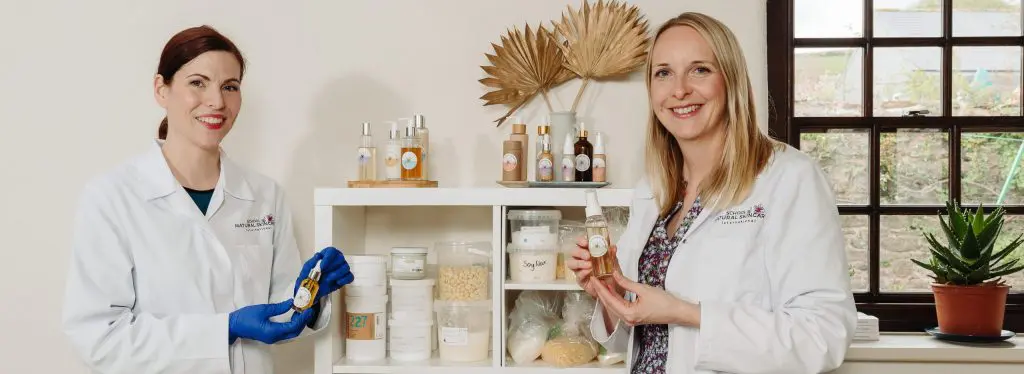
Exclusive for our newsletter subscribers. Sign up now.
We look after your data in accordance with our privacy policy.
Download this fabulous guide and you’ll learn:
- What formulating is and why you need to be doing it!
- The difference between following recipes and formulating your own products.
- Our step-by-step process to designing products people love.
- Four easy ways to personalize your skincare products.
- Choosing the right carrier oils for your beauty products.
- Plus, you’ll get our Safe Product Checklist: How to make sure the skincare products you make are safe and stable
Loved reading this article? Make sure to remember by pinning it!
